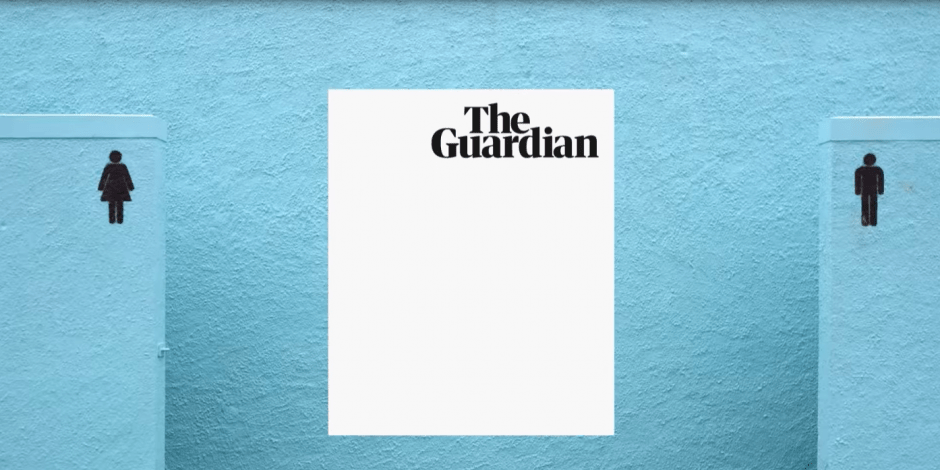By Ian Burrell
The Guardian is developing a two-tier digital model aimed at driving thousands of its most avid readers who currently do not pay for its journalism towards an enhanced and increasingly distinct service for which they will pay a monthly fee.
The strategy, set out to The Drum by Caspar Llewellyn Smith, editor of The Guardian’s digital platforms, will enable the publisher to continue its tradition of open publishing, and will rely on offering a superior user experience, rather than putting any content behind a paywall.
The plan is focused on The Guardian’s premium app, which costs £5.99 per month ($6.99 in the US). The platform introduced two new features last week, ‘Live’ and ‘Discover’, offering new ways to consume the title’s news stories and its longer reads. Neither service – regarded internally as The Guardian’s equivalent to Twitter and Instagram – is currently available to users of the free Guardian app.
The Guardian will re-position the premium app in September with the introduction of a range of new features. This will be backed by a marketing campaign aimed at transitioning more of the Guardian’s global audience of 150 million monthly browsers to paying users.
“In the autumn we will be thinking about how we get people to move from being just web users into the app and then maybe moving them on to becoming premium app users,” says Llewellyn Smith. As part of the strategy, a live sports feed will be introduced in the premium app in time for next month’s World Cup.
He says that less than 10% of the Guardian’s 2.7 million app users are currently paying for the premier service. “With the app, frankly the big metric is how many people are going to start paying for it,” he explains.
A changing product
In time, The Guardian’s paid app service and its website could look quite different.
“It depends on how much money it makes,” says Llewellyn Smith. “Does the app begin to develop a slightly different identity from the website and the two start to serve slightly different audiences? Hitherto they have been essentially the same thing. [Is] this is an audience that we know better and are there some bits of our journalism that they might be more interested in than the general reader of the website?”
Since mid-January when it relaunched its print paper in tabloid format, The Guardian has been focusing hard on its app audience, which engages with content on average 2.1 times a day, compared to 1.3 for mobile web readers. Almost half the app audience is in the UK (41%), with 14% in the US, 7% in Australia and 38% in the rest of the world.
The strategy dovetails with the Guardian’s donations policy, introduced in dire financial straits in 2016, whereby it requests financial help from readers in support of its open publishing model; a ploy which, The Drum revealed, has seen 800,000 donors, subscribers and members hand over cash.
Llewellyn Smith says that number has grown “significantly” in the past seven months. Campaigning investigative stories on the data firm Cambridge Analytica and the scandalous treatment of children of the Windrush immigrants, and in-depth coverage of the gender pay gap in British business, have delivered spikes in donations.
“The pleasing news for Guardian journalists is that the journalism that we feel proudest of and feel that we are here to produce is the stuff that motivates people to pay,” he says.
Supporters, not members
Guardian News and Media, which publishes The Guardian and The Observer, reported losses of £19m for the year to the end of March 2018, meaning it is ahead of its targets to break even by next April. The company has not been in the black since 1998 but Llewellyn Smith, who is also The Guardian’s head of culture, looks forward to the day when it has profits to reinvest in journalism.
The Guardian’s Scott Trust ownership structure has meant it has always been unique in news publishing but its reader relationship model is increasingly distinct from that of rivals. While the concept of ‘membership’ is taking hold in the news industry, Llewellyn Smith says The Guardian, which once embraced that terminology, is now “retiring that language around membership” in preference for using the word ‘supporter’.
While publishers with paywalls market their subscription offerings as transactions that give exclusive access, there is an altruistic element in The Guardian’s pitch to supporters. “We are just thinking how can we make those super loyal readers love the product even more, but clearly we are at the same time saying to them that by paying you are helping to keep the rest of it free for other people,” he says.
Readers can be ‘supporters’ by making recurring donations or buying the paper, but signing up for the premium app will be marketed as “the best way you can read the Guardian”, he explains, while adding that all forms of financial backing from users are welcome.
Digital focus
The Guardian’s app strategy is helped by its continued focus on digital innovation, aided by its new £42m GMG Ventures venture capital project, which in turn is supported from the paper’s endowment fund. Investments have been made in ten startups, including those developing technology tools for journalism in areas such as block chain, artificial intelligence and big data. Some of these startups are working outside of media but have valuable specialisms ranging from customer experience expertise to online learning and recruitment innovation, including diversity concepts.
GMG Ventures, says Llewellyn Smith, has enabled The Guardian to appraise itself of latest insights in areas such as text to voice technology and the use of augmented reality, even at a time when the wider business has been heavily cutting costs. “We are seeing some incredibly interesting companies and it’s helping expose people like me and the digital teams to huge amounts of innovation.”
Some of this learning will appear in the paid app.
Llewellyn Smith says the premium app is but one piece of the Guardian’s “bigger jigsaw”. Its website home page remains “an incredibly powerful tool for us”, he says.
The Guardian is becoming less reliant on social media and has substantially changed its relationship with Facebook, which now accounts for less than 5% of the title’s digital traffic, a number that is continuing to fall following the paper’s abandonment of Facebook’s Instant Articles service last April.
The distancing from Facebook follows a stinging 2016 essay from Guardian editor-in-chief Katharine Viner, headlined ‘How Technology Disrupted the Truth’. In the op-ed, she outlined Facebook’s power over news and “the panic” among publishers over changes to its algorithm.
Llewellyn Smith reveals that The Guardian has now scrapped the Facebook Messenger-based Guardian Chatbot project it launched in November 2016 when the social platform was promoting chatbots as the new big thing. “We’re constantly trying things out,” he says. “After running it since late 2016 we made the decision to close our chatbot to focus more on engaging readers on our own platforms but we’ll continue to experiment in this area in line with our readers’ changing habits.”
With The Guardian still needing to spend with caution, he must identify technology that improves user experience rather than embracing fads. “We have got to be absolutely focused on the task in hand: trying to get to the point of break-even,” he says. “I’m much more interested in finding different ways of telling stories in the service of our readers than plucking the latest thing out of the air and saying everyone is talking about this.”
The Guardian has built a new in-house investigations tool, which is currently being deployed in several editorial projects. It experimented with virtual reality in the film ‘6×9’, which graphically demonstrated life in solitary confinement in the US prison system.
One week into the new changes to the paid app, Llewellyn Smith is “pretty pleased” with the initial response. Live is a rolling feed of every breaking news story as it happens. Discover is a deeper dive into pieces of analysis, reportage and indulgences such food recipes.
“The numbers of people using those two screens [Live and Discover] are pretty healthy,” he says. “Where we go next with them is interesting and I think maybe that click through on the Discover screen could be higher and that [could be] the area where you might think about some light degree of personalisation.”
It’s another indication of the Guardian’s digital audience splitting into two groups.
Much has been written about the bubble effect of social media algorithms and Llewellyn Smith says the Guardian would be “very hesitant” about personalising news content. But some users might appreciate a filtering out of sports content, or a more bespoke recipe service in their Discover feed.
“Maybe you only look at the vegetarian recipes because you are a good Guardian person, or – if you are a real Guardian reader – only the vegan ones, so we stop showing you Nigel Slater’s meat feast,” he jokes. “There are low levels of personalisation around features journalism that will be interesting to explore.”
Some Guardian stereotypes are real. When the paid app’s new Twitter-style Live feed was unveiled internally one admonishing member of the technology desk warned that the product could have an addictive quality and that the Guardian had criticised tech companies for seeking such user dependency. “It completely floored me,” says Llewellyn Smith. “I’d like to think that people would become addicted to The Guardian’s journalism.
“It’s only at The Guardian you would have got that question.”
Covering the most powerful media companies to the smartest startups, former Independent media editor Ian Burrell examines the fraught problem of how news is funded today. Follow Ian @iburrell.























